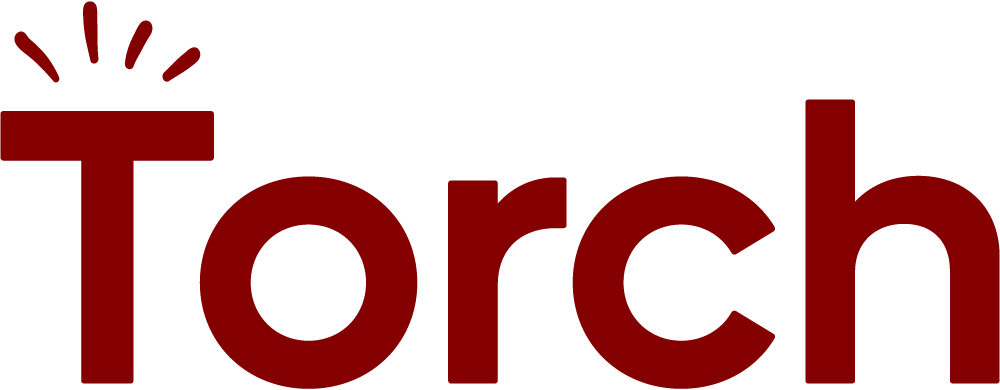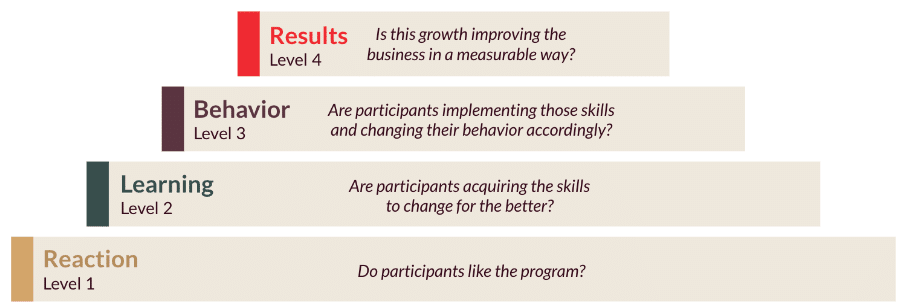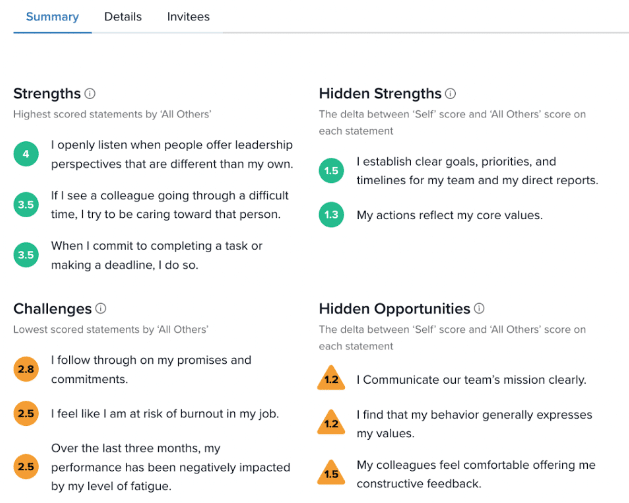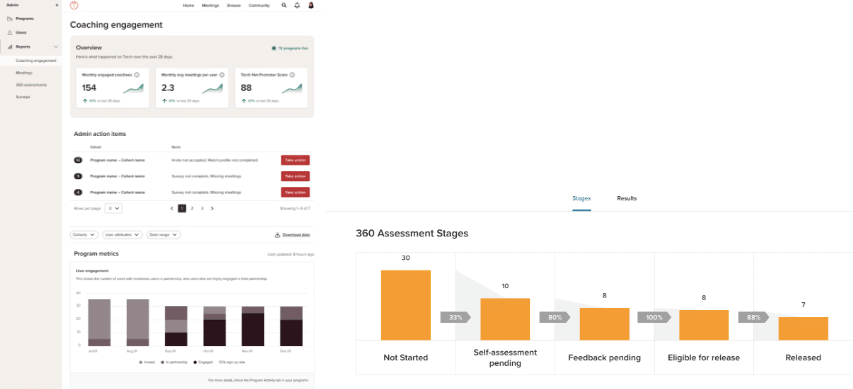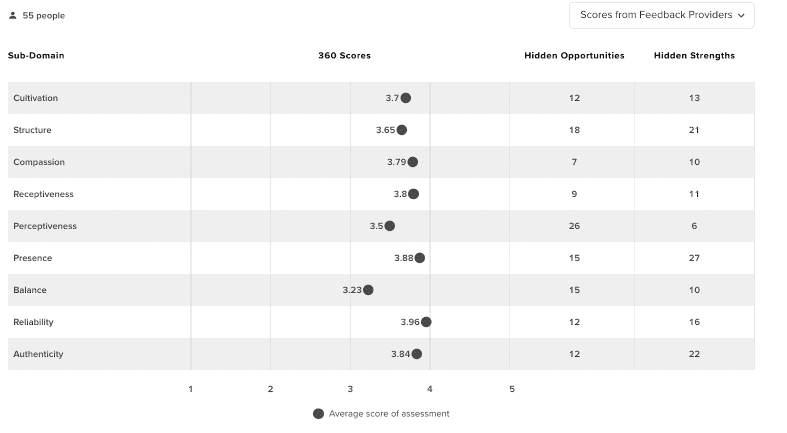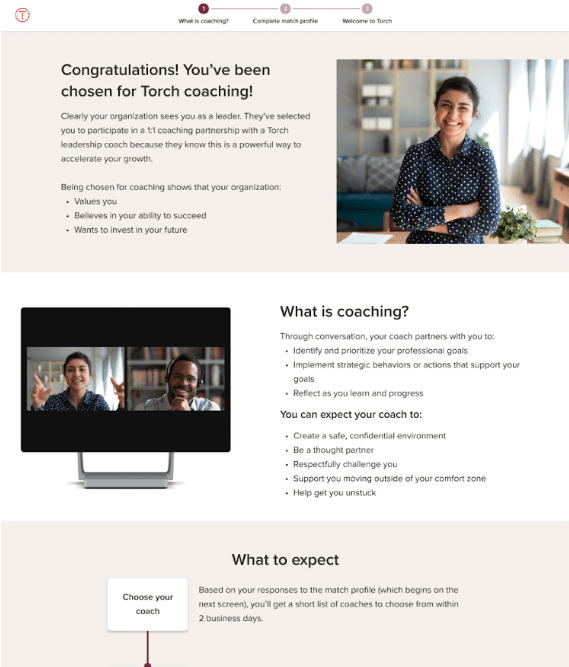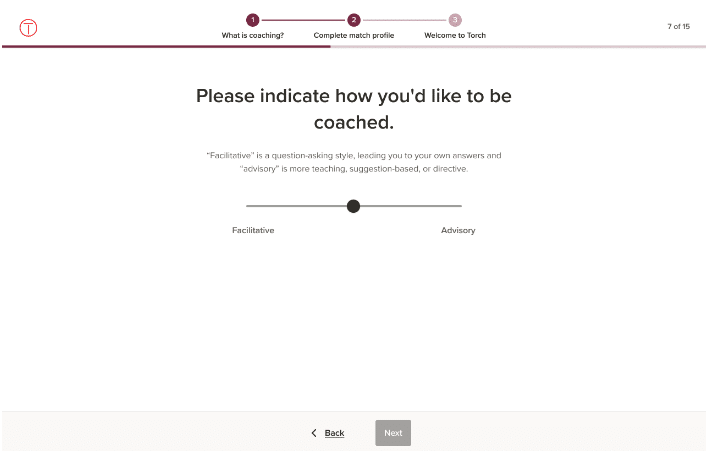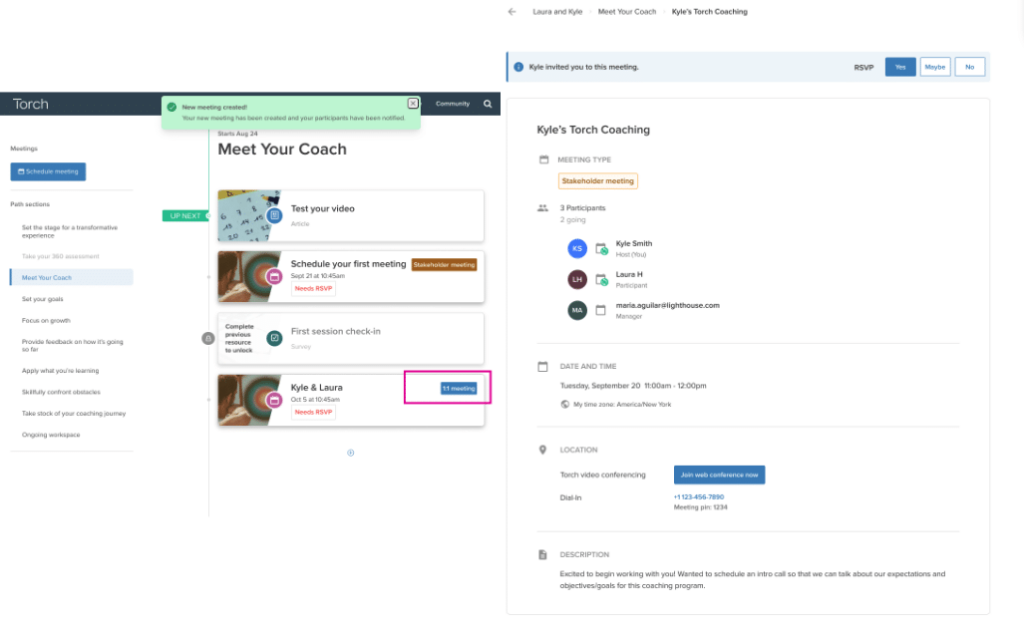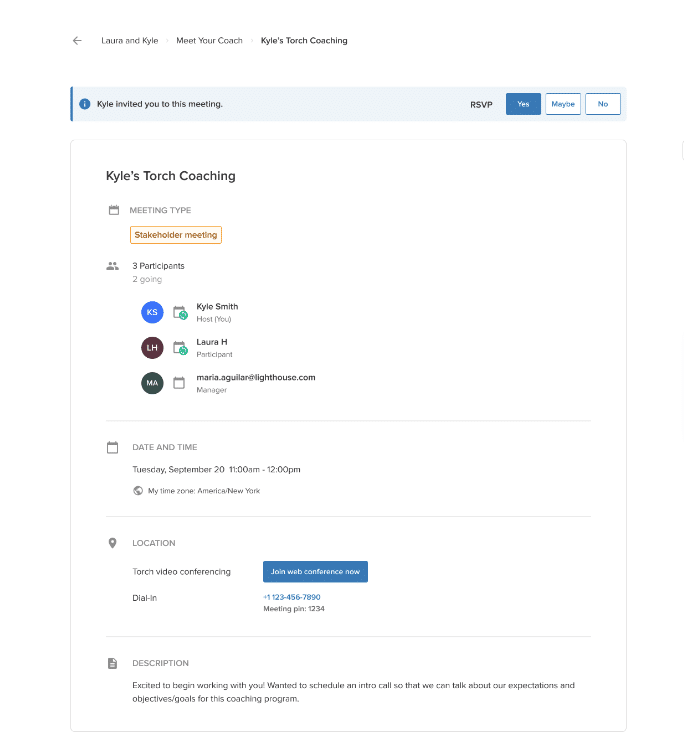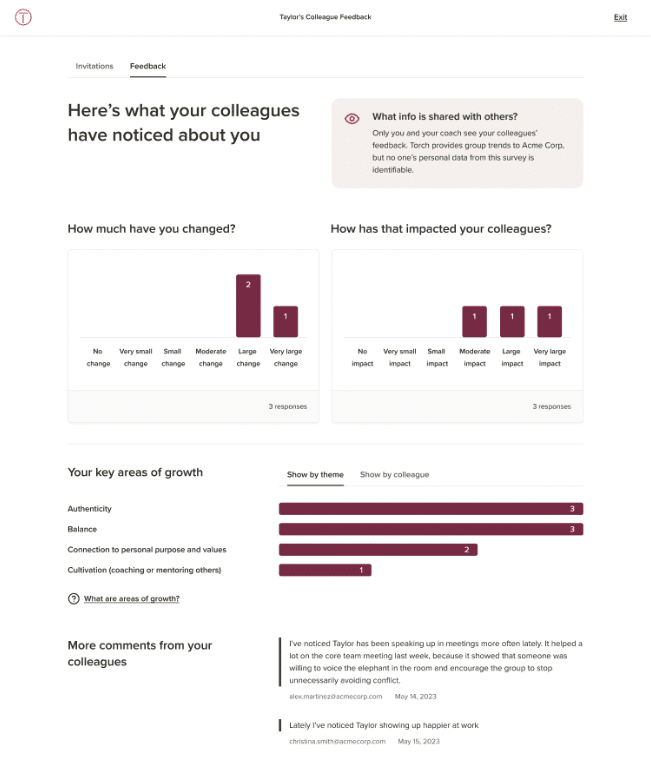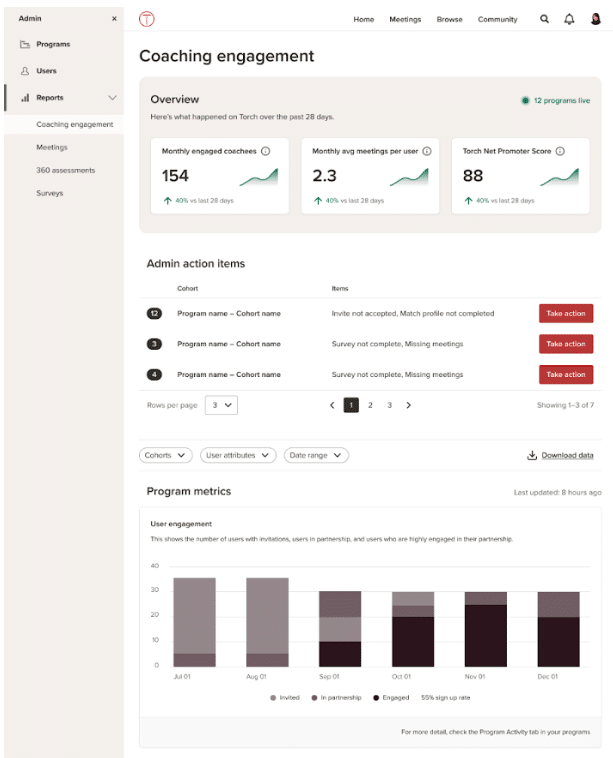Leveraging Outcome-Based Coaching Solutions at Your Organization
What is outcome-based coaching?

Many leadership development programs rely on a one-size-fits-all approach, leaving leaders feeling disengaged and failing to fully develop essential skills.
This can lead to long-term costs for organizations, including underdeveloped leadership capabilities and increased employee turnover. Poor leaders can also create a ripple effect that negatively impacts their colleagues and direct reports’ productivity, satisfaction, and growth.
Unlike other coaching providers who prioritize generic programs, Torch takes an outcome-based approach to coaching. Outcome-based coaching emphasizes sustainable skill development and behavior change, which creates a lasting positive impact.
Torch’s coaching suite, with the recent addition of tailored 1:1 coaching programs and group coaching solutions, align around key business priorities and needs. These programs are designed to seamlessly adapt to your organization’s unique goals and deliver clear and lasting outcomes.
Let’s dive into what each of these solutions look like.
Tailored 1:1 Coaching Programs
Tailored 1:1 coaching programs solve business problems through program-specific content and assessments that align with your organization’s objectives. These programs address key audiences and their collective challenges, such as new managers developing foundational skills and middle managers dealing with burnout, in a one-on-one setting with a coach.
Torch’s flagship 1:1 coaching offering is largely directed by the person receiving coaching, where the participant identifies areas they want to target with their coach, who guides them toward their goals while holding them accountable. Tailored 1:1 programs, on the other hand, are designed to be more prescriptive.
In a tailored 1:1 coaching engagement, approximately 60% of time is spent on content and exercises that focus on solving a business-related challenge and the remaining time is reserved for developing additional skills unique to the individual. Because of this structured approach, these programs provide organizations with predictable and repeatable results, enabling them to realize value in real time.
Group Coaching Programs
Torch’s group coaching program also tackles shared business challenges, however, its core differentiator is that there are multiple participants with similar experiences, identities, or skills gaps, collaborating to reach a common objective.
How do you when group coaching is the right fit? Several use cases include developing new managers, improving communication skills, and leading through change. These programs create a trusted space for employees to engage in facilitated discussions, learn from other group members, and reflect on shared challenges with their peers.
Torch’s top-rated group coaches lead sessions for groups of 6-8 participants, with learning plans curated and designed by Torch’s behavioral science team. Surveys throughout the program look at participant goals, group performance and effectiveness, participant behavior change, and program effectiveness, which Torch provides to program admins to help them better understand and measure outcomes.
The Future of Coaching
As the world of work continues to change, Torch’s COO, Heather Conklin, offered her take: “At Torch, we recognize that every organization faces unique challenges and has specific goals they want to achieve. Our goal has always been to align our coaching programs with these objectives, and create strong leaders who can drive positive change within their organizations. We are confident that these new programs will help our Torch customers further accelerate the positive impact of leadership coaching on business results, and we’re excited to continue evolving our approach to meet the ever-changing needs of our customers.”
By incorporating group coaching or tailored 1:1 coaching programs into your broader L&D strategy, you can ensure that your people are growing in alignment with both the organization and with each other.
